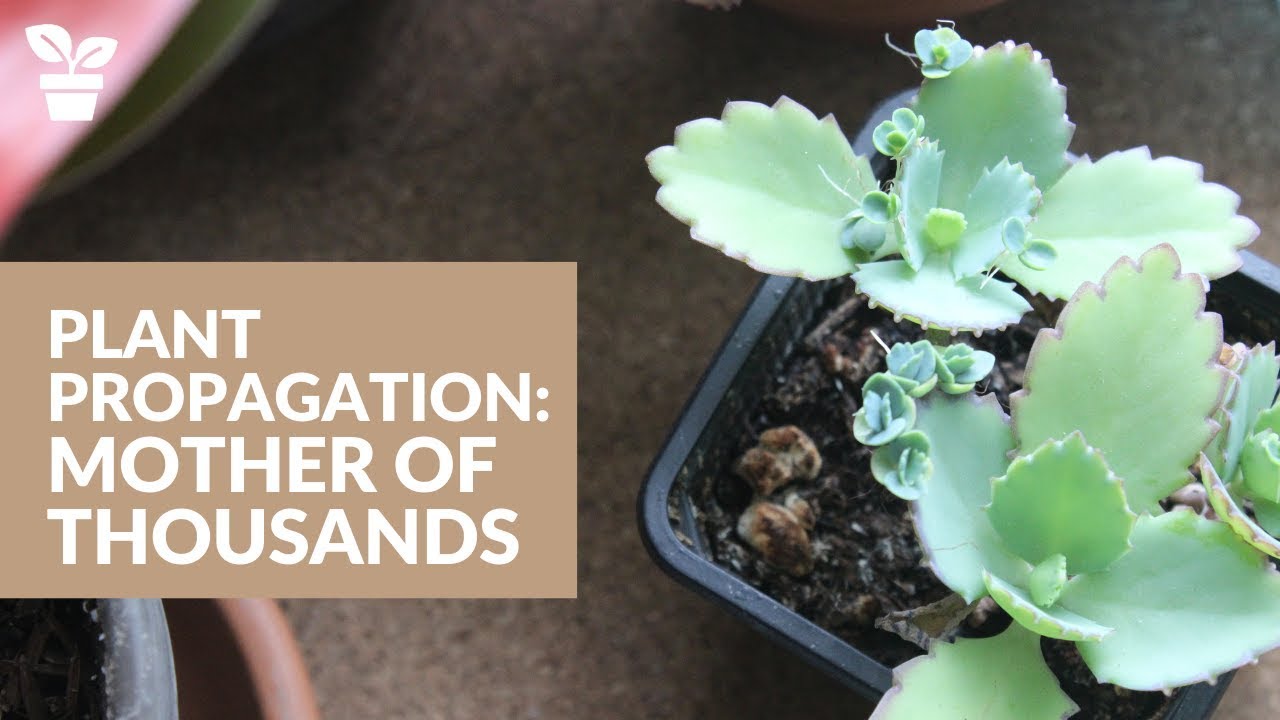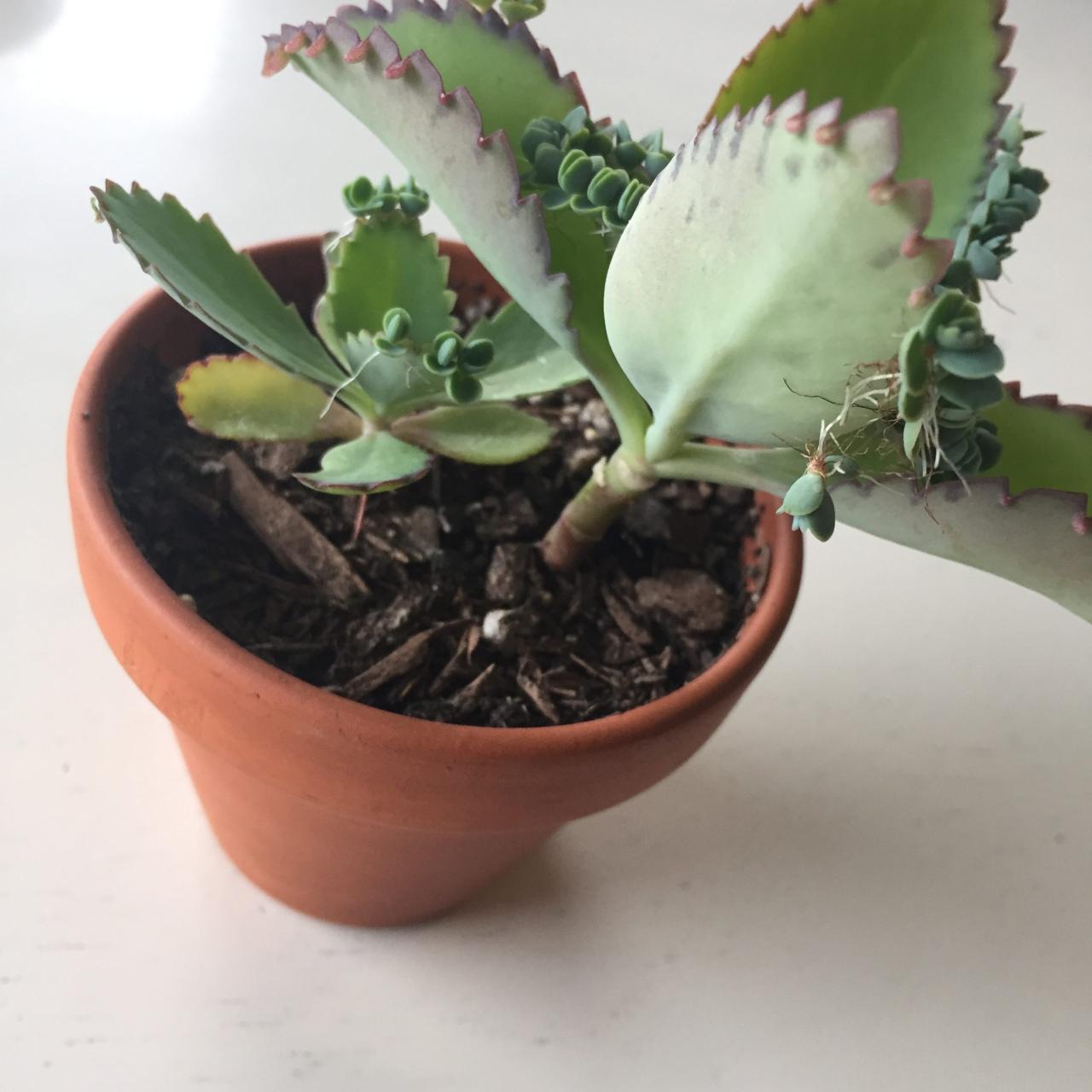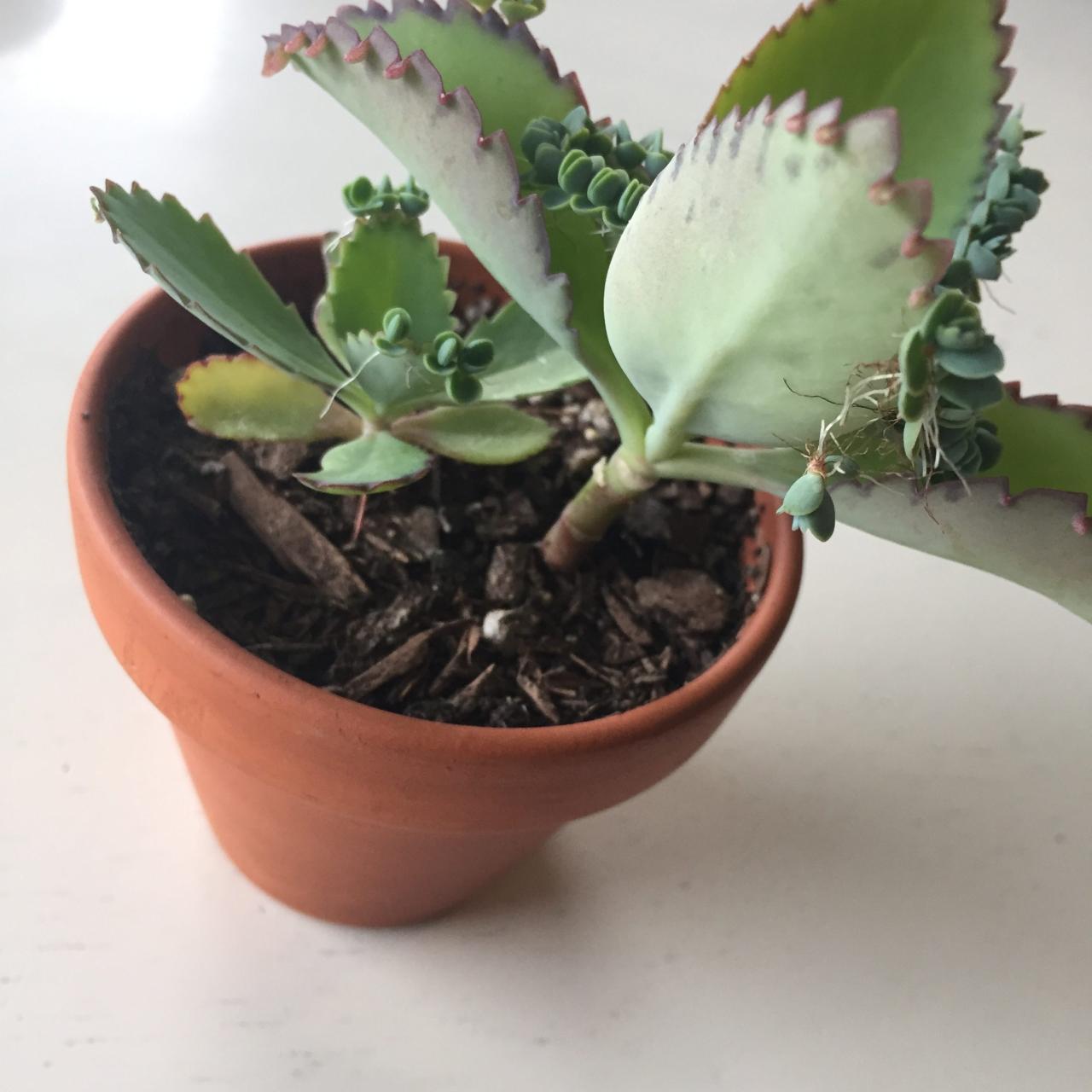Grow Your Mother of Thousands Collection with These Propagation Tricks – the name itself conjures up images of lush, vibrant greenery, and a sense of botanical abundance. These fascinating plants, known for their unique ability to produce miniature plantlets along their leaves, are not only aesthetically pleasing but also remarkably easy to propagate.
Whether you’re a seasoned plant enthusiast or just starting your gardening journey, mastering the art of propagating Mother of Thousands can be a rewarding experience, allowing you to expand your collection and share the joy of these captivating plants with others.
Mother of Thousands, scientifically known as -Kalanchoe daigremontiana*, is a succulent native to Madagascar. Its striking, elongated leaves, adorned with tiny plantlets along their edges, have earned it a reputation as a captivating houseplant. Its ability to thrive in various conditions, including low light and infrequent watering, makes it a popular choice for busy gardeners and those seeking a low-maintenance addition to their indoor spaces.
But the true magic of Mother of Thousands lies in its remarkable ease of propagation. With a few simple techniques, you can effortlessly multiply your collection, creating a verdant oasis of these captivating plants.
Introduction to Mother of Thousands
The Mother of Thousands, scientifically known asKalanchoe daigremontiana*, is a captivating succulent renowned for its unique propagation method and striking appearance. Its name aptly describes its prolific nature, as it produces numerous plantlets along the edges of its leaves, which readily detach and develop into new plants.
This fascinating characteristic has made it a popular choice for both novice and experienced plant enthusiasts.
Native Habitat and Growth Conditions
Native to Madagascar, the Mother of Thousands thrives in warm, dry environments with ample sunlight. It prefers well-drained soil and can tolerate periods of drought. The plant’s natural habitat provides insight into its ideal growing conditions. Its thick, fleshy leaves are adapted to store water, enabling it to survive in arid regions.
The plant’s ability to reproduce vegetatively through plantlets further enhances its survival in challenging environments.
Popularity as a Houseplant
The Mother of Thousands has gained widespread popularity as a houseplant due to its striking appearance, ease of care, and unique propagation method. Its long, pointed leaves, often displaying dark green spots or bands, create a visually appealing contrast against its silvery-green stems.
The plant’s ability to produce countless plantlets adds to its intrigue, allowing for easy propagation and the creation of new plants. This ease of propagation makes it a popular choice for beginners who are eager to explore the world of plant propagation.
Propagation Methods
Propagating Mother of Thousands is relatively straightforward, thanks to its prolific nature. This plant readily produces plantlets, which are miniature versions of the parent plant, making it easy to create new plants. Several methods can be employed to propagate this plant, each with its advantages and disadvantages.
Methods of Propagation
The following table summarizes the different propagation methods for Mother of Thousands, outlining their advantages and disadvantages:
Method |
Description |
Advantages |
Disadvantages |
|---|---|---|---|
Plantlets |
The most common method, involving detaching plantlets from the parent plant and planting them in a suitable medium. |
Easy and readily available, fast growth rate. |
Can be messy, requires careful handling to avoid damage. |
Leaf Cuttings |
Cutting a leaf from the parent plant and allowing it to root in a suitable medium. |
Simple and efficient, produces multiple plantlets from a single leaf. |
May take longer than using plantlets, requires a humid environment. |
Seed Propagation |
Collecting seeds from the plant and sowing them in a suitable medium. |
Produces a large number of plants, allows for genetic diversity. |
Time-consuming, requires patience, may not be as reliable as other methods. |
Division |
Separating a mature plant into multiple smaller plants. |
Quick and easy, produces multiple plants from a single parent. |
May damage the parent plant if not done carefully. |
Leaf Propagation: Grow Your Mother Of Thousands Collection With These Propagation Tricks

Leaf propagation is a simple and effective method for multiplying your Mother of Thousands collection. This method involves taking a leaf from the parent plant and encouraging it to develop roots and new growth.
Preparing Leaves for Propagation
Prepare the leaves for propagation by selecting healthy and mature leaves from the parent plant. It is important to choose leaves that are free of any diseases or pests.
- Cut the leaves with a sharp knife or pair of scissors, ensuring a clean cut to prevent damage to the leaf.
- Allow the cut ends to dry for a few hours to form a callous, which will help prevent rot and promote root development.
Ideal Conditions for Root Development
To create the ideal environment for root development, provide the leaves with the following:
- A well-draining potting mix that is slightly moist but not soggy.
- A warm and humid environment with indirect sunlight.
- A consistent temperature between 70-80 degrees Fahrenheit.
Rooting Hormone for Faster Root Growth
Rooting hormone is a beneficial tool that can accelerate root development in Mother of Thousands leaf cuttings. It contains auxins, plant hormones that stimulate root growth.
- Apply a small amount of rooting hormone powder to the cut end of the leaf before placing it in the potting mix.
- Ensure the hormone is evenly distributed on the cut surface for optimal results.
Plantlet Propagation
Plantlet propagation is a straightforward method for multiplying your Mother of Thousands collection. These tiny plantlets emerge from the leaves of the mother plant, providing an abundance of new plants to add to your collection or share with others. This method is a great way to quickly expand your collection and enjoy the unique beauty of this fascinating plant.
Separating Plantlets from the Mother Plant
Plantlets develop on the edges of the leaves, appearing as miniature versions of the mother plant. When these plantlets have developed a few small leaves and a root system, they are ready to be separated. This process is simple and can be done with your fingers.
Gently twist or pull the plantlet away from the mother leaf, ensuring the roots remain intact.
Preparing Plantlets for Planting
Once separated, the plantlets require a brief preparation before planting. This involves removing any excess soil or debris clinging to the roots and allowing them to air dry for a few hours. This drying process helps to prevent rot and allows the roots to toughen up before planting.
Choosing the Right Potting Mix for Plantlets
The ideal potting mix for Mother of Thousands plantlets is a well-draining, slightly acidic mix. A suitable blend includes equal parts peat moss, perlite, and vermiculite. This mixture provides adequate drainage to prevent root rot and allows for good aeration, promoting healthy root development.
While you’re busy propagating your Mother of Thousands collection, consider a fun family outing to a local orchard. For a delightful fall experience, head to Why Harvest Moon Orchard Is the Perfect Place for a Fall Family Outing , where you can pick apples, enjoy hayrides, and indulge in delicious cider donuts.
Back home, you can put those propagation skills to work and create your own little indoor orchard with these fascinating succulents.
Ideal Growing Conditions for Newly Planted Plantlets
Newly planted plantlets thrive in warm, bright conditions. Avoid direct sunlight, which can scorch the delicate leaves. Maintain a consistent temperature between 65-75°F (18-24°C) and ensure the potting mix remains slightly moist but not waterlogged. With proper care, the plantlets will quickly establish roots and begin to grow into mature plants.
Seed Propagation
While Mother of Thousands primarily propagates through plantlets and leaf cuttings, it is possible to grow them from seeds. However, this method is less common due to the plant’s prolific nature and the ease of other propagation techniques.
Seed Collection and Sowing
Collecting seeds from a Mother of Thousands plant requires patience and observation. The plant produces small, brown, dust-like seeds within its tiny, bell-shaped flowers. These flowers typically appear in clusters at the end of the plant’s stems. Once the flowers wither, the seed capsules will begin to dry out and turn brown.
You can gently collect the seeds by shaking the dried capsules over a piece of paper.
Ideal Conditions for Seed Germination
Mother of Thousands seeds require specific conditions for optimal germination. These include:* Warm Temperatures:Ideal temperatures for germination are between 70°F and 75°F (21°C and 24°C).
Bright, Indirect Light
While seeds need light for germination, direct sunlight can be too harsh. A sunny windowsill with filtered light or a grow lamp with a light intensity of 1000-2000 lux is recommended.
Moist Soil
Propagating your Mother of Thousands is a breeze, and you can quickly expand your collection with these simple tricks. Once you have a healthy batch, consider visiting a local orchard for a different kind of bounty. How to Experience All That Harvest Moon Orchard Has to Offer offers a delightful escape into the world of fresh fruits and vegetables, providing a perfect complement to your green thumb endeavors.
After all, a little variety in your plant life can be just as satisfying as a juicy peach from the orchard.
The soil should be consistently moist but not waterlogged. A well-draining potting mix is essential to prevent root rot.
Nurturing Seedlings and Transplanting
Once the seeds germinate, which can take a few weeks, they will develop into small seedlings. * Thinning:As the seedlings grow, it’s important to thin them out to prevent overcrowding. This allows each seedling to receive adequate light and nutrients.
Space the seedlings approximately 2-3 inches apart.
Transplanting
Once the seedlings have developed a few sets of true leaves, they can be transplanted into individual pots or into their final growing location. Choose a well-draining potting mix and ensure the pots have drainage holes.
Expected Growth Rate of Seedlings
Seedlings grown from seeds will take longer to mature than those propagated from plantlets or leaves. It can take several months for seedlings to reach a size comparable to a plantlet or leaf cutting. However, once established, Mother of Thousands plants grown from seeds will exhibit the same vigorous growth and prolific plantlet production as those propagated through other methods.
Troubleshooting Common Issues

Propagating Mother of Thousands can be a rewarding experience, but like any plant propagation, challenges can arise. Understanding common issues and their solutions can increase your success rate and help you enjoy healthy, thriving plants.
Root Rot
Root rot is a common problem in plant propagation, and Mother of Thousands is no exception. It occurs when roots are constantly wet, leading to fungal growth that damages and eventually kills the roots.
- Signs of Root Rot:Wilting leaves, yellowing or browning of leaves, a foul odor from the soil, and soft or mushy roots are all signs of root rot.
- Preventing Root Rot:Using well-draining potting mix, ensuring proper drainage in the propagation container, and avoiding overwatering are crucial for preventing root rot.
- Treating Root Rot:If you suspect root rot, remove the plant from the soil and inspect the roots. Cut away any damaged or mushy roots with clean, sharp scissors. Repot the plant in fresh, sterile potting mix and water only when the soil is mostly dry.
Fungal Infections, Grow Your Mother of Thousands Collection with These Propagation Tricks
Fungal infections can affect both the leaves and roots of Mother of Thousands. These infections are often caused by excessive moisture and poor air circulation.
- Signs of Fungal Infections:Brown spots or patches on leaves, powdery mildew on the leaves, and a white or gray fuzz on the soil surface are common signs of fungal infections.
- Preventing Fungal Infections:Proper sanitation, providing adequate air circulation, and avoiding overwatering are key to preventing fungal infections. Always use clean tools and pots for propagation, and avoid overcrowding plants during propagation.
- Treating Fungal Infections:If you notice fungal infections, remove infected leaves or plant parts. Treat the plant with a fungicide specifically designed for houseplants.
Slow Growth
Slow growth in Mother of Thousands can be caused by several factors, including insufficient light, nutrient deficiencies, and improper watering.
- Causes of Slow Growth:Mother of Thousands prefers bright, indirect light. If it receives too little light, it may grow slowly. Insufficient nutrients can also hinder growth. Finally, overwatering or underwatering can also lead to slow growth.
- Promoting Growth:Ensure the plant receives at least 6 hours of bright, indirect light per day. Fertilize regularly with a balanced liquid fertilizer diluted to half strength. Water only when the top inch of soil is dry.
Sanitation and Pest Control
Maintaining good sanitation practices and implementing pest control measures are crucial for healthy plant propagation.
- Sanitation:Always sterilize tools and pots before using them for propagation. Sterilization can be achieved by wiping tools with rubbing alcohol or by soaking them in a bleach solution (1 part bleach to 9 parts water). Clean pots thoroughly with soap and water, then rinse well before using them.
- Pest Control:Regularly inspect your plants for pests like aphids, mealybugs, and spider mites. If you notice any pests, isolate the affected plant to prevent the spread. Use a suitable insecticide or insecticidal soap to control pests. You can also use natural methods like neem oil or insecticidal soap.
Conclusion
Congratulations! You now possess the knowledge to successfully propagate your Mother of Thousands plant, a rewarding experience for any plant enthusiast. We’ve explored the various methods, from leaf propagation to the more traditional seed propagation, ensuring you have a comprehensive understanding of this fascinating plant.
Remember, the key to success lies in providing the right conditions, such as well-draining soil, ample sunlight, and appropriate watering. With a little patience and attention, you’ll soon have a thriving collection of Mother of Thousands plants, ready to share with friends or decorate your home.
Final Conclusion
From leaf cuttings to plantlet separation and even seed propagation, Mother of Thousands offers a diverse range of methods for creating new plants. Each technique presents its own set of advantages and considerations, allowing you to choose the approach that best suits your needs and preferences.
With a little patience and care, you can witness the fascinating process of new life emerging from these remarkable plants, expanding your collection and sharing the beauty of Mother of Thousands with friends, family, or even fellow plant enthusiasts.
Helpful Answers
Is it difficult to propagate Mother of Thousands?
No, Mother of Thousands is known for its ease of propagation. It can be easily propagated through leaves, plantlets, or seeds.
What is the best time to propagate Mother of Thousands?
Spring and summer are generally considered the best times to propagate Mother of Thousands, as the plant is actively growing during these seasons.
Can I propagate Mother of Thousands in water?
Yes, you can propagate Mother of Thousands in water, although it is more common to propagate them directly in soil.
How long does it take for Mother of Thousands to root?
Depending on the propagation method and growing conditions, it can take anywhere from a few weeks to a couple of months for Mother of Thousands to root.
